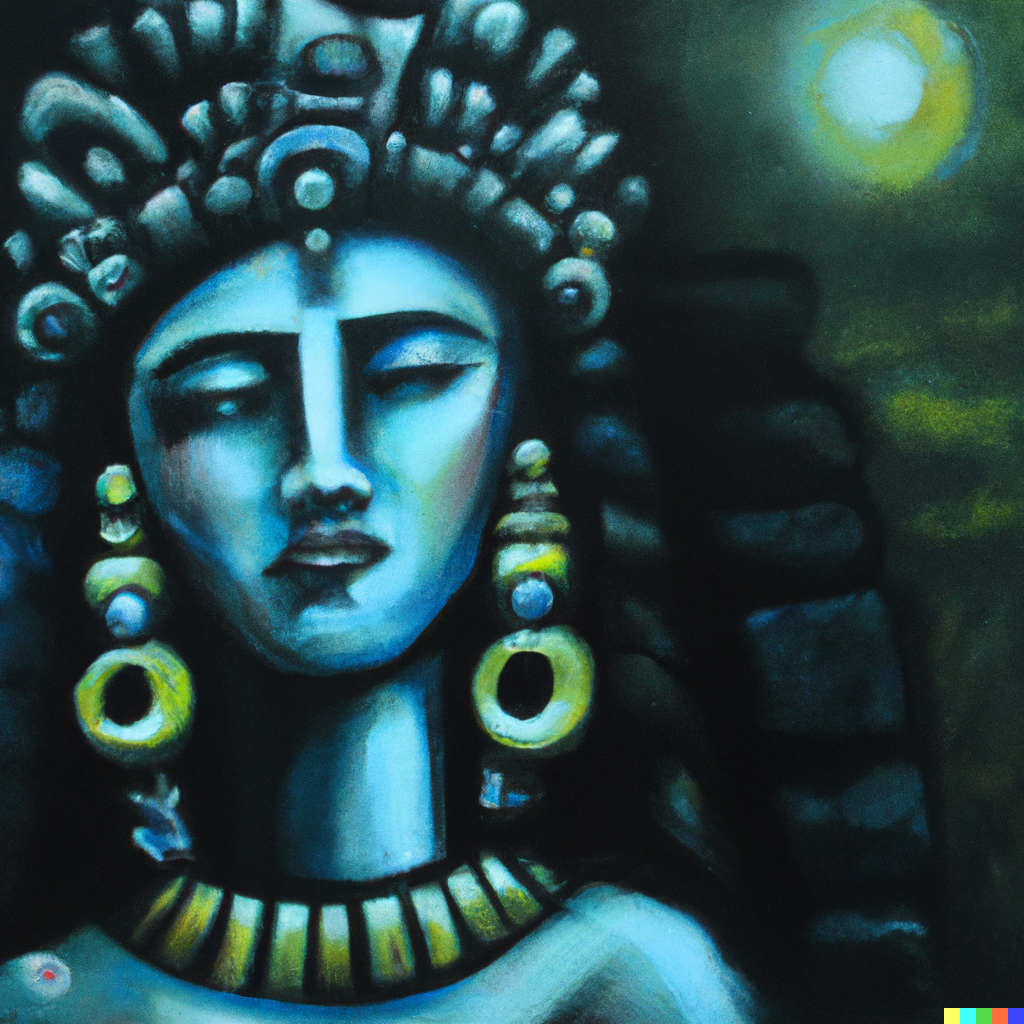The Moon has been the timeless and universal symbol that has represented women in the beliefs of all civilizations on the planet. For primitive man, the Moon was the natural symbol of the feminine essence, in contrast to the masculine essence considered to be of a solar nature. The intimate connection between many female fertility rites and the Moon is manifested by its association with a symbology referring to the female reproductive organs, gestation and childbirth.
In the coastal and Andean civilizations of pre-Hispanic America, the cult of the Moon was widely generalized, although it is clear that not in all cases its ceremonial rites were registered or symbolized and in many others they adopted confused forms and manifestations.
In the Inca worldview, mother Moon (Mama Quilla), sister and wife of father Sun (Taita Inti) was the guardian and protector of all manifestations and feminine aspects of the Quechua universe. The changes that the star manifested during its orbital cycle led to a lunar calendar that governed various aspects of the Andean universe and worked in parallel to the solar calendar. In specific terms, the Moon and its phases indicated the periods of great fertility of the earth (Mama Pacha) and exerted a direct influence on the fertility of women.
The cult of Mama Quilla was conserved, participated in and celebrated exclusively by women. The priestesses of the Moon belonged to the Cusco female elite, were very numerous and had a main temple in Qorikancha. These priestesses wore long gray robes and cloaks of the same shade, covered their heads with a thick white wool cap, and wore silver earrings that made a metallic sound that warned men of their presence, who were forbidden to look at them.
The priestesses of the moon were known as great healers and very wise women, they knew the secrets of the plants and were very busy sorcerers, their oracles generally announced disasters and calamities, that is why the moon was revered with great fear, unlike the Sun. who was adored with joy.
In the tenth month of the Inca calendar, Coya raymi (September), at the beginning of the rainy season – spring equinox – during the first night of the new Moon, the Quillamama raymi took place, a great celebration in honor of the Moon , a special festival for women.
The party began inside the Qorikancha temple, at the altar of the Moon, then continued with a silent nocturnal walk towards Saqsaywaman; there in the temple of Mama quilla, torches were lit that illuminated the night with sparkles to the sky reflected by silver fountains, then they made vibrate thin sheets of silver that emitted a sound that broke the silence to attract the attention of the moon. Essences and perfumes were burned, the water was watered with aromatic oils and they threw combs, mirrors, needles, women's ornaments and miniaturized silver filigree into the sky, reflected in the water, they also burned white llama wool and fine women's clothing in bonfires.
In the current province of Anta in the department of Cuzco - Peru, located at 3,600 meters above sea level. is the sanctuary of Quillarumiyoc (the stone of the moon) which is considered the only ceremonial archaeological center dedicated to women.
Quillarumiyoc occupies a huge terraced area built in the same style as Saqsayhuaman, Chincheros and the upper parts of Ollantaytambo (ancient sacred sites located in Cuzco). The Huaca or stone replica of an Apu (sacred mountain) is a symbol carved on one of the largest rocks and represents an ancient temple dedicated to the divinity of the essence and the expression of the feminine principle.
Within the universal concept of lunar mythology, the connection with Quilla Mama is what gives the Quechua woman the secrets of magic, charm, beauty, the strength of the invisible, knowledge of cycles and feminine wisdom; it also reminds him of her instability and vulnerability. It is to her that the Andean women offered to ask for protection for girls, women in labor and newborn babies.
Original post:
https://terraza-ilalo.blogspot.com/2015/01/mama-quilla-o-madre-luna.html




